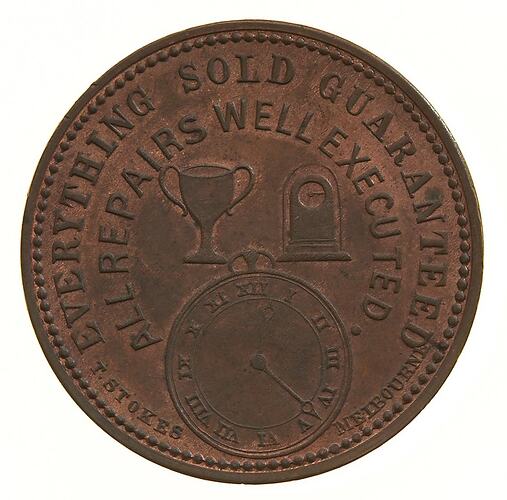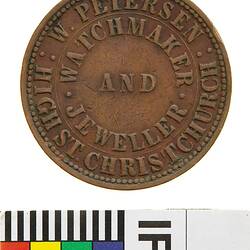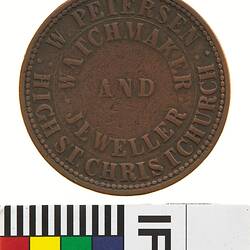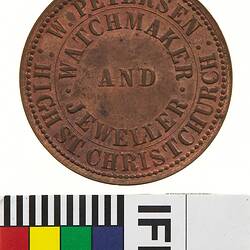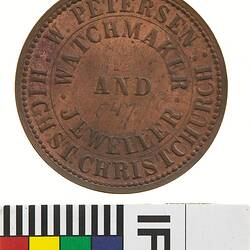Benjamin Martin (B.M.) Petersen was born in the Norwegian city of Bergen in 1837, where he undertook a watchmaking apprenticeship. By the time he was 26 he had established his own business in High Street, Christchurch. As of 1950 a business with the same name was still trading in Christchurch.
Towards the end of the 1860s Petersen left Christchurch and established a branch of his business in London, with a store in Dunster House, Mincing Lane. In 1872 he was married in his home town and his only child, a son, was born in 1876. He died in the London suburb Anerley in 1916, aged 79. When he left Christchurch, Petersen sold his store to a Mr. Nashelski, who was also involved with J. Caro & Co., another token-issuing firm.
The High Street store was originally made of corrugated iron, and it was rebuilt twice, once in 1879 and then again in 1911, the second time being rebuilt out of brick and stone. As the Petersen store (the founder's name was retained after he sold it) only rented its site, eventually they had to move locations, and in 1946 they moved to 33-37 New Regent Street.
Although the token was made in the name of W. Petersen, not B. Petersen, the researches of the Canterbury Branch of the New Zealand Numismatic Society have determined that this was a mistake in the manufacture of the tokens, as there was no W. Petersen, Watchmaker and Jeweller, in Christchurch in the years up to 1882.
Petersen issued one penny token. The token was struck by Thomas Stokes of Melbourne. The Museum Victoria catalogue gives an estimated date for the issue as circa 1863.
References:
The Canterbury Branch of the Royal Numismatic Society of New Zealand. They Made their Own Money: The Story of Early Canterbury Traders & their Tokens. 1950, pp.68-73.
More Information
-
Keywords
-
Localities
-
Authors
Mr Adrian Regan, The Canterbury Branch of the Royal Numismatic Society of New Zealand
-
Article types
